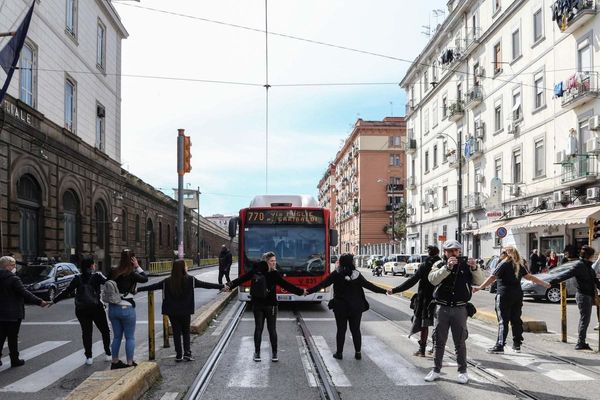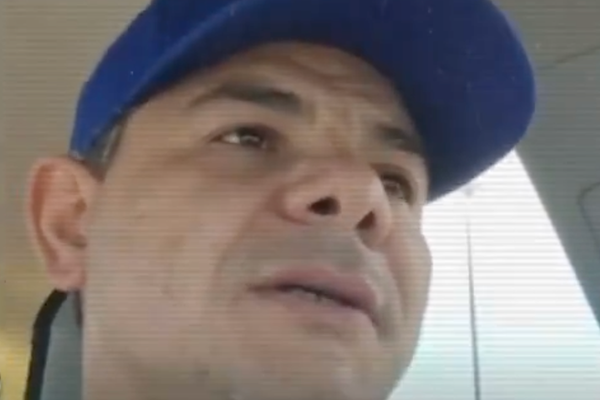
ATLANTA �� Legendary investor Warren Buffett once was quoted as saying Coca-Cola was such a strong company that a ham sandwich could run it.
As new CEO James Quincey takes over from the outgoing Muhtar Kent, he faces challenges that have turned Buffett's aphorism into a painful reminder of better days.
The Atlanta company is still hugely profitable, but increasingly under pressure. Soda sales stalled, and its core Coke brand slipped in the U.S. market as people cut back on sweet, fattening drinks in recent years. The beverage market is more fragmented, with new choices constantly materializing. Coke is pushing to broaden its lineup with non-fizzy brands, but its lifeblood remains soda.
Behind its perpetually sunny marketing facade, Coke in recent years has spent enormous corporate energy rearranging internally and retooling operations to deal with new marketplace realities.
Onto the stage now steps Quincey, a British-born, 21-year Coke veteran who is expected to bring new ideas and vitality.
His tenure didn't start quietly. On Tuesday, in what was essentially his first act as CEO, Quincey used an earnings call with financial analysts to announce job cuts that will hit the headquarters staff in Atlanta hard.
The company plans to eliminate 1,200 jobs later this year from a pool of 5,500 corporate positions. The cuts are part of a plan to save about $800 million through 2019.
Quincey said the cuts are "clearly a painful process," but necessary. He said job decisions will be made "as fairly as possible," but also with "speed."
"People don't want this to linger on," he said in an interview.
Quincey said the plan is to use about half of the savings to speed investment in new products and marketing, and to restore Coke's revenue and profit growth to 4 to 6 percent per year.
"There's an acceleration we'd like to see," Quincey said. "I don't think we're broken, but I don't think we're where we need to be."
While soda sales are an obvious sore spot, they aren't Coke's only issue. Assessing the company's fortunes from the outside has been complicated in recent years by an overhaul of bottling operations.
In 2010 Coke bought North American bottling operations from partner Coca-Cola Enterprises. It did the same with hundreds of bottlers around the world. Coke for a time took control of the operations, significantly enlarging the company. Now it's spinning them back out to new partners under terms aimed at making that end of the business more efficient and nimble, while freeing Coke to focus on marketing and product development.
The bottlers were "brought into the hospital ward, if you like," Quincey said. "We can see our new bottlers are stronger."
Sandy Douglas, head of Coca-Cola's North American operations, said the upshot is that the company and the bottlers will be focused on the same goal _ making money rather than boosting volume.
"I could not care less about gallons (of sodas sold). I care about dollars," Douglas said in a separate interview.
Coke cites evidence of success: Despite weak volume stats, revenue in Douglas's North America unit is up almost 11 percent in the past three years. Pre-tax profits are up almost 15 percent over that time.
The overhaul has been costly, though. Corporate debt has skyrocketed in recent years.
Coke's revenue has slipped for the past four years _ from $48 billion in 2012 to $41.9 billion last year _in part because of the accordion effect of the bottling overhaul.
The 130-year-old company's star has also faded a bit in other ways.

In 2007, Coca-Cola was the most valuable brand in the world, according to London consulting firm Brand Finance, which ranks brand values annually, based on its own calculations. Now it's 16th in the U.S. and 27th in the world, according to the firm's latest list, well behind companies like Google, Apple and Amazon.com.
Coke's fortunes matter in Atlanta.
The company has long been a source of coveted, high-paying jobs at its downtown headquarters. It's helped bankroll universities and cultural institutions, and it's often the first example boosters cite when touting the city as a business-first powerhouse.
Look around Atlanta, and you'll see Coke leaders' names etched in stone: The Candler Building downtown is named for founder Asa Candler. Emory University's Goizueta Business School carries the name of CEO Roberto Goizueta, who oversaw huge growth in the 1980s and '90s.
Kent, who ran the company for about nine years, in 2015 elevated Quincey to heir apparent. The pick became final last December, when Kent set his retirement for May 1.
Born in London, Quincey spent part of his youth in Hanover, N.H., where his father lectured at Dartmouth.
Quincey got his degree from the University of Liverpool but decided he was better at business than engineering. He joined giant consulting firm Bain, which eventually led to a job at Coke.
Quincey, who is fluent in Spanish, spent much of his Coke career in Europe and Latin America.
He is credited with diversifying Coke's British business several years ago by buying Innocent, a "healthy" smoothie company. Before that, in Mexico, Quincey reversed market share losses to Pepsi and led the acquisition of juice maker Jugos del Valle, which Coke says now generates more than $1 billion in sales.
Douglas, a key lieutenant to the new CEO, said he's known Quincey since he was hired. The engineering background serves Quincey well, he said.
"He asks very good questions, and he listens too."
Quincey has another crucial backer.
"I know James and like him, and believe the company has made a smart investment in its future with his selection," Buffett said when Coke announced Quincey's ascension. Buffett's Berkshire Hathaway owns 400 million Coke shares (valued at $17.3 billion, give or take) making it unlikely that any new CEO would get picked without his approval.
"The most positive thing I've heard is that Warren Buffett likes him," said Greg Charleston, senior managing director at the Atlanta office of Conway McKenzie, a boutique turnaround adviser. He added that the endorsement should give Quincey some breathing room to deal with problems.
The biggest of the company's problems is that people are simply less likely to reach for a soda than in the past, and there's little indication that the trend is fleeting.
Coca-Cola's "megabrand" sales volume _ Coke and its variants _ fell almost 5 percent over the past three years in the U.S. and were down almost 1 percent worldwide, according to company filings to the U.S. Securities and Exchange Commission. Those core brands account for nearly half of sales volume.
The decline is partly due to health concerns that sugary drinks contribute to obesity and diabetes. A number of cities and countries _ including New York City, Philadelphia, Santa Fe and Mexico, one of Coke's largest markets _ have considered or enacted taxes or other curbs on soft drinks.
But more than soda politics are at work. Consumer tastes are shifting toward new products, experts say. They are being supplied by competitors popping up all over, they say, because it's getting easier for small companies to launch new drinks and get them into markets.
Customers around the world face a dizzying choice of bottled waters, flavored teas, iced coffees, smoothies, fruit juices, energy drinks, and other concoctions.
This more fragmented market is requiring Coke to shift from its "have a Coke" mindset to a fast-moving, portfolio approach to the market, industry experts say. It has spent billions buying more brands around the globe, or developing new products itself.

Gold Peak tea, launched about a decade ago by Coke, passed $1 billion in annual revenues about four years ago, and is now the No. 3 tea brand in the U.S. Another, Smartwater, is the result of Coke's $4 billion-plus Glaceau acquisition in 2007, while Dunkin Donuts Iced Coffee is a recent roll-out from a joint deal with that company.
One dud: an ill-fated 2015 venture with Keurig to market a single-serve soda dispenser called Keurig Kold. Kent called it a "game-changer," but the machine bombed and was discontinued within months.
Bill Chappell, an analyst with SunTrust Robinson Humphrey, expects Quincey to work harder still to "push the entire portfolio."
"One thing he has said is 'We are bigger than Brand Coca-Cola.' If he had said that ten years ago, he would have been escorted out of the building," Chappell said. "That was blasphemy."
Brett Cooper, vice president and beverage analyst for Consumer Edge Research, expects Quincey to treat Coca-Cola more like a holding company with hundreds of brands, telling product managers to move faster, roll out successful brands in more countries, and be willing to fail.
"You can't study it for a year to get it right. You have to get it out there," said Cooper.
The balance between broadening the product lineup and protecting core brands is both tricky and crucial, said Chappell. Soda demand has softened in the U.S. and some other markets, but it still is growing overall, he noted.
Globally, Coke sold 29.3 billion cases of all types of beverages last year, flat from 2015 but 29 percent higher than in 2007. Non-soda drinks accounted for most of that growth, but soda volumes also grew worldwide, according to company figures.
In recent years Coke has shifted its focus from soft-drink volume to the revenue and profit it gets from each bottle or can. A key element of that strategy: smaller servings that appeal to people cutting back on sugary drinks. They also sell for more per ounce.
But overall, Coke revenues and profits over the last decade trace a path like the rise and fall of a cannonball. Profits rose from about $6 billion in 2007 to nearly $12 billion in 2010, only to steadily fall since then, to $6.5 billion last year.
Coca-Cola's shifting product mix is part of the story, as are changing currency valuations that affect companies with heavy international sales.
The biggest driver, however, has been the bottling overhaul launched by Kent, which now falls to Quincey to finish.
Before, Coca-Cola pushed bottling partners to sell more gallons, which encouraged too much discounting, Douglas said. The new bottling owners _ there will be several dozen when Coke finishes the process in North America next year _ have deals that reward them for bringing in more cash, he said.
That means they will be quicker to try things that boost revenue, such as new products and smaller servings at higher prices.
"It's working really, really well," Douglas said.
While buying new drink businesses and retooling bottling operations, Coke also has spent billions of dollars in recent years buying back stock and growing dividend payouts _ moves that shore up its Wall Street appeal but also are costly.
The company's debt mushroomed to nearly $46 billion by the end of last year, from $9.3 billion in 2008. Standard & Poor's cut Coca-Cola's debt rating a notch last year, and warned of another possible downgrade, as has Fitch Ratings.
Quincey said it's "nothing to worry about," and that Coke has plenty of cash built up in overseas profits _ about $22 billion _ that it can tap more cheaply if President Donald Trump's promises of tax changes come through.
He expects that by 2019 the fruits of Coke's rejuvenation efforts will be more obvious.
"Those that are willing to crunch the numbers can see it now," he said.







